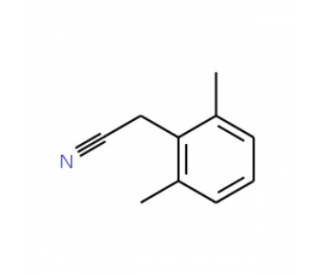详细说明
Species Reactivity
Human
Specificity
Detects human GDF‑3 in direct ELISAs. In direct ELISAs, less than 10% cross-reactivity with recombinant human (rh) BMP-2 and rhGDF-1 is observed.
Source
Monoclonal Mouse IgG 2B Clone # 878751
Purification
Protein A or G purified from hybridoma culture supernatant
Immunogen
Chinese hamster ovary cell line CHO-derived human recombinant GDF-3/BMP-2 heterodimer
Ala251-Gly364
Accession # Q9NR23Formulation
Lyophilized from a 0.2 μm filtered solution in PBS with Trehalose. *Small pack size (SP) is supplied as a 0.2 µm filtered solution in PBS.
Label
Unconjugated
Applications
Recommended
ConcentrationSample
Neutralization
Measured by its ability to neutralize GDF-3 induced Smad2 phosphorylation in the P19 mouse embryonal carcinoma cell line. 7.5-15 μg/mL of this antibody can significantly neutralize recombinant human GDF-3 (50 ng/mL) induced Smad2 phosphorylation in P19 cells.
Please Note: Optimal dilutions should be determined by each laboratory for each application. are available in the Technical Information section on our website.
Preparation and Storage
Reconstitution
Reconstitute at 0.5 mg/mL in sterile PBS.
Shipping
The product is shipped at ambient temperature. Upon receipt, store it immediately at the temperature recommended below. *Small pack size (SP) is shipped with polar packs. Upon receipt, store it immediately at -20 to -70 °C
Stability & Storage
Use a manual defrost freezer and avoid repeated freeze-thaw cycles.
12 months from date of receipt, -20 to -70 °C as supplied.
1 month, 2 to 8 °C under sterile conditions after reconstitution.
6 months, -20 to -70 °C under sterile conditions after reconstitution.
Background: GDF-3
GDF-3 (previously called Vgr-2) is a TGF-beta superfamily member belonging to the growth/differentiation factor family (1, 2). GDF-3 is expressed in undifferentiated embryonic stem (ES) cells, white adipose tissue and the brain (2-4). The 364 amino acid (aa) human GDF-3 contains a 21 aa signal sequence, a 229 aa propeptide and a 114 aa mature region that contains one potential N-glycosylation site. The mature region contains a cysteine-knot structure that is conserved throughout family members. However, it lacks the fourth cysteine which is responsible for the formation of an inter-molecular disulfide bond, so GDF-3 may exist as a non-covalent homodimer (2, 5). Mature human GDF-3 shares 83%, 83%, 91%, 92% and 93% aa sequence identity with mouse, rat, bovine, canine and equine GDF-3, respectively. Most of GDF-3 is present as the uncleaved prepro form (6). The uncleaved and the mature forms both appear to have activity, but that activity may differ (5-8). All forms can oppose BMPs. In human ES cells, inhibition of BMP-2 signaling by GDF-3 maintains pluripotency (5, 7). GDF-3 also influences early cell fate decisions; for example, deletion of mouse GDF-3 produces defects in the anterior visceral endoderm of the pre-gastrulation embryo (6-8). GDF-3 cooperates with GDF-1 in embryogenesis, and the mature protein has nodal-like activity (8, 9). Although GDF family members signal through BMP receptors (ALK-1, -2, -3 and -6), which activate Smads 1, 5 and 8, GDF-3 signaling through ALK-4 and ALK-7, which activate Smads 2 and 3, has also been reported (9, 10). In adipocytes, GDF-3 is induced by a high fat diet, promoting adipogenesis and obesity (3, 10, 11).
References:
Levine, A.J. and A.H. Brivanlou (2006) Cell Cycle 5:1069.
McPherron, A.C. and S.-J. Lee (1993) J. Biol. Chem. 268:3444.
Wang, W. et al. (2004) Biochem. Biophys. Res. Comm. 321:1024.
Hexige, S. et al. (2005) Neurosci. Lett. 389:83.
Levine, A.J. et al. (2009) Dev. Biol. 325:43.
Levine, A.J. and A.H. Brivanlou (2005) Development 133:209.
Peerani, R. et al. (2007) EMBO J. 26:4744.
Chen, C. et al. (2006) Development 133:319.
Andersson, O. et al. (2007) Dev. Biol. 311:500.
Andersson, O. et al. (2008) Proc. Natl. Acad. Sci. USA 105:7252.
Shen, J.J. et al. (2009) Mol. Endocrinol. 23:113.
Long Name:
Growth Differentiation Factor 3
Entrez Gene IDs:
9573 (Human); 14562 (Mouse)
Alternate Names:
GDF3; GDF-3; growth differentiation factor 3; growth/differentiation factor 3; KFS3; MCOP7; MCOPCB6; Vgr-2











 粤公网安备44196802000105号
粤公网安备44196802000105号